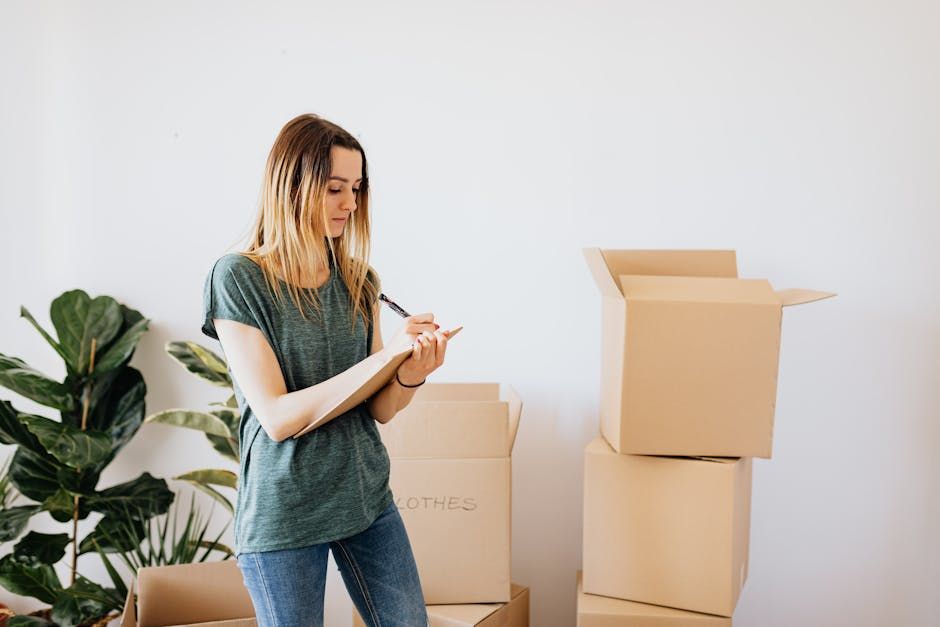How to color-code boxes for a move
This simple, smart color-coding system helps keep packing organized and unpacking remarkably easy so you can avoid unnecessary stress on moving day

Moving day typically ends with you standing in a room packed with a dozen identical cardboard boxes, exhausted and confused about which one holds the coffee maker. Considering 17% of Americans regret moving because they lost items in the process, a 2023 survey found, having a system for keeping track of your stuff is a good idea.
The process of moving will probably never be easy, but a bit of smart planning can bring order to the chaos. A simple color-coding system is a seriously effective strategy for a streamlined move.
This guide explains how using color can make packing more efficient and unpacking significantly less stressful. It's a low-effort system that pays huge dividends when you're tired, overwhelmed, and want to find your toothbrush.
2 / 6
Why color coding your boxes matters

KATRIN BOLOVTSOVA via Pexels
The standard method of labeling boxes with a black marker works, but it isn't efficient. Use color coding because it:
- Offers at-a-glance recognition. The human eye processes color much faster than it reads text. A bright red sticker is instantly identifiable from across the room, while a handwritten label requires someone to stop, get close, and read, slowing down the entire moving process.
- Streamlines the moving process. When movers or helpers can immediately identify where each box belongs, they can work more quickly and independently. That means boxes are placed in the correct rooms from the start, saving you the effort of shuffling them around later.
- Enables efficient room-by-room unpacking. Grouping boxes by room with a single color creates a clear unpacking plan. You can confidently unpack one entire room at a time, knowing you have everything you need, which brings a sense of order and accomplishment to a chaotic process.
- Allows for strategic prioritizing. Color coding can signal urgency. Designating a high-visibility color (such as bright orange) for boxes you want to open first can help make your first night feel comfortable and organized.
- Minimizes confusion and costly errors. A clear visual system dramatically reduces the chance of mistakes. Boxes are less likely to be misplaced or left behind when they're brightly and clearly marked, preventing the stress and wasted time of searching for the right box.
3 / 6
Choosing your color scheme for effective coding
Practical options when selecting your color scheme include:
- Colored packing tape
- Bright, oversized dot stickers
- Thick permanent markers in different colors
- Sample pots of latex paint
Once you have your materials, select enough distinct, high-contrast colors to cover your moving categories. Think bold blues, yellows, reds, and greens that are easy to tell apart. For a system that's accessible to everyone helping you, including people with colorblindness, consider pairing each color with a unique symbol, such as a star or another simple pattern.
4 / 6
How to assign colors for maximum efficiency
There are three common methods for assigning colors, each with its own benefits:
- Room (most popular): This is the most straightforward and effective method for most household moves. Assign one color to each room or area (e.g., red for the kitchen, blue for the bedroom).
- Item type: For example, all boxes containing books could be yellow, regardless of which room they end up in.
- Unpack priority: This method uses color to signal urgency. You could mark essential, open first boxes in red, week one boxes in yellow, and nonessential items in green.
Whatever system you choose, create a color legend on a sheet of paper and tape it to the front door of your new home to give helpers a clear, immediate reference point. Sharing a digital photo of your legend is another great way to keep everyone on the same page.
5 / 6
Practical ways to use color coding on boxes
For your system to work, the color codes must be impossible to miss. A single small label on top of a box won't be visible once it's stacked. Be bold with your labeling.
Mark the top and at least two sides of every box with a large, clear swath of color. A wide strip of colored tape, a big sticker, or a thick block of marker color ensures visibility from almost any angle.
For even greater clarity, combine your color with a short written label. A large blue sticker paired with the words "master bedroom" leaves no room for confusion. Always use durable materials, such as waterproof markers and strong packing tape, so your labels don't smudge or peel off in transit.
6 / 6
Using labels and inventories alongside color coding
Color coding tells you a box's destination, but it doesn't tell you its contents. Pairing colors with a simple inventory system creates a truly foolproof plan for unpacking. Taking an extra step and combining multiple labeling methods transforms a mountain of boxes into a manageable, searchable database.
As you pack, you might label each box within its color group (e.g., Red: Kitchen Utensils, Red: Coffee Stuff). On a notepad or in a spreadsheet, create a corresponding inventory list that notes the box number, its color/room, and a brief summary of its contents.
The master list is your secret weapon during the unpacking phase. When you're tired and urgently need to find the shower curtain or TV remote, you won't have to tear open random boxes. You can simply consult your inventory, locate the exact box you need, and bask in the sense of calm that comes with a well-executed plan.
